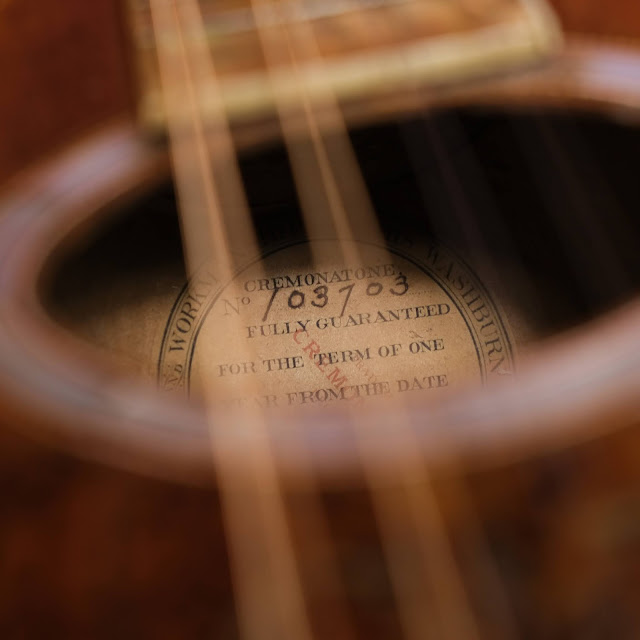1890s Washburn Style 175 Bowlback Mandolin
This super-fancy Lyon & Healy Washburn Style 175 arrived ages ago for customer repair and proceeded to sit -- neglected -- for ages more. It had some general "vintage fatigue" -- loose braces, a collapsed top, frets needing work, a missing bridge, etc. -- but its worst crime against getting fixed-up was pearl needing to be replaced here and there throughout. This is not surprising, though, as vast tracts of this instrument are made from nothing but pearl. Just look at that fretboard!
Clearly, this instrument was offered-up in its day so you could pull it out at the local mandolin orchestra club meets and knock everyone on the head with your over-indulgent wealth and airy aspirations.
Anyhow, it arrived with its issues and after righting them it has a lovely, full, warm sound and it plays spot-on. I was surprised at the warmth of the instrument because a lot of period Washburn bowlbacks tend to sound a little spidery and thin -- as was typical for most American bowlbacks at the time. I suppose the extra attention to detail (and the too-lightly-braced top, for that matter) paid-off in one way or another.
Repairs included: brace reglues, new ebony (compensated) bridge, fret level/dress and fret seating, seam and crack re-repairs, replacement pearl (made fussy especially due to some distortions in the top around the soundhole and along the top's edges), cleaning, and setup.
Made by: Washburn / Lyon & Healy
Model: Style 175
Made in: USA
Serial number: 103703
Top wood: solid spruce
Back & sides wood: solid Bazilian rosewood (tons of ribS)
Bracing type: ladder
Bridge: ebony, compensated, new
Fretboard: maple with pearl veneer
Neck wood: maple
Tone: clean, clear, warm, sweet
Action height at 12th fret: 1/16" overall (fast)
String gauges: GHS A240 set -- 32w-9, use no heavier
Neck shape: medium C/V
Board radius: flat
Fret style: very small/low
Scale length: 13"
Nut width: 1 1/8"
Body length: 12"
Body width: 7 1/4"
Body depth: 5 1/2"
Weight: 1 lb 9 oz
Condition notes: it has a number of old crack repairs and a bunch of replacement pearl inlay. The hardware is tarnished but highly-engraved. The original pearl tuner buttons have a few chip-outs/small cracks but work fine. The bridge is a replacement. The top is sunken in the middle (at bridge) but the bracing is reglued and stable in service. Its neck is straight but the frets are quite low (they were low when new, though, to be fair). The top is especially distorted at the soundhole from tension/compression over time. There's a small amount of pearl missing in the inlaid pickguard as well as a little bit of celluloid pickguard material, too.


















Comments
Regarding the question on mandolin bridges.
A mandolin bridges can be bought- although it may be necessary to get someone to fit it and tweak it as necessary. To a degree this is dependent on the individual instrument but it can be done more easily if the instrument has a flat top- as opposed to a curved top which may demand some fettling so the bridge sits properly. Obviously, string spacing may be an issue as well- a common sense approach is necessary- look before you leap- or saw or sand or carve.